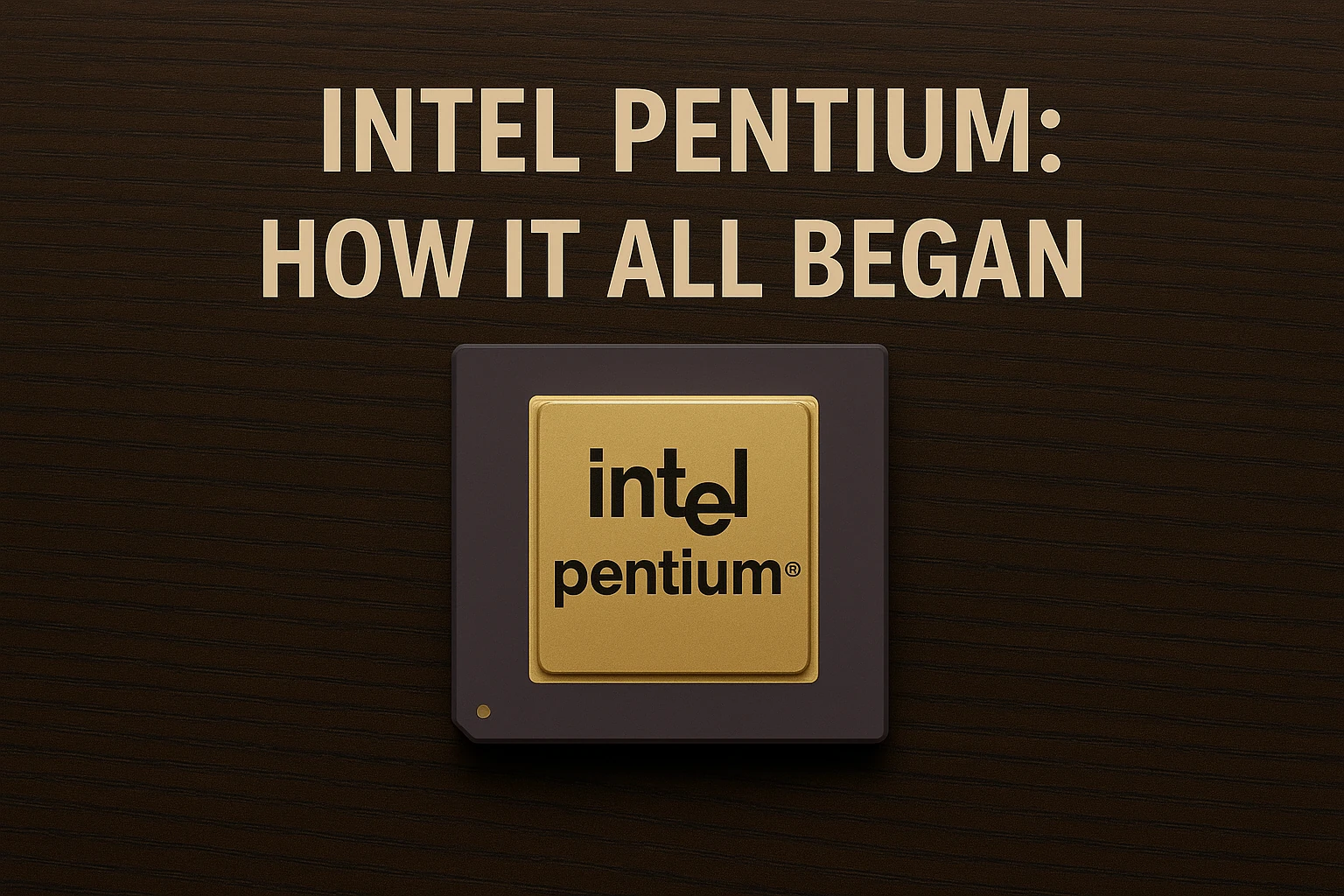Intel Pentium – How It All Began
Introduction
The Intel Pentium processor, introduced in 1993, marked a turning point in personal computing. It was Intel’s fifth-generation x86 CPU and the first to carry the now-iconic Pentium brand name. This article explores the history, innovations, and impact of the original Pentium processors.

1. The Birth of Pentium (1993)
Intel needed a fresh start after legal battles prevented them from trademarking number-based CPU names (like 486). The name "Pentium" (from the Greek pente, meaning "five") was chosen to signify the fifth generation of x86 processors.
Key Features of the First Pentium (P5 Architecture)
- Superscalar Architecture – Dual instruction pipelines allowed two instructions per clock cycle.
- 64-Bit Data Bus – Doubled bandwidth compared to the 486.
- Separate 8KB Caches – Split instruction and data caches for better performance.
- Clock Speeds – Ranged from 60 MHz to 200 MHz (later models).
The FDIV Bug (1994)
- A floating-point division error in early Pentiums caused rare but significant calculation mistakes.
- Intel initially downplayed the issue but later offered free replacements, costing them $475 million.
- Became a famous case study in hardware reliability and PR crisis management.
2. Pentium Pro (1995) – The Powerhouse for Professionals
Designed for workstations and servers, the Pentium Pro introduced:
- Dynamic Execution – Out-of-order execution for better efficiency.
- On-Package L2 Cache – Up to 1MB of high-speed cache (but slower than on-die cache).
- 32-Bit Optimization – Performed poorly on 16-bit code, limiting its success in consumer PCs.
3. Pentium II (1997) – The Mainstream Revolution
Intel shifted to the Slot 1 cartridge design with the Pentium II, featuring:
- MMX Technology – Enhanced multimedia performance.
- L2 Cache on the Module – Faster than Pentium Pro but still not on-die.
- Celeron Spin-off – A budget version with reduced cache (later improved in Mendocino).
Notable Models:
- Pentium II Klamath (233-300 MHz) – First model, built on 0.35µm process.
- Pentium II Deschutes (266-450 MHz) – More efficient 0.25µm process.
4. Pentium III (1999) – The SSE Era
The Pentium III introduced Streaming SIMD Extensions (SSE), improving multimedia and gaming performance.
Key Variants:
- Katmai (450-600 MHz) – First PIII, still used Slot 1.
- Coppermine (500-1133 MHz) – Moved to Socket 370, integrated L2 cache.
- Tualatin (1.0-1.4 GHz) – Final PIII, highly efficient but overshadowed by Pentium 4.
5. Pentium 4 (2000) – High Clocks, High Heat
The NetBurst architecture pushed clock speeds to extreme levels (up to 3.8 GHz), but:
- Poor Efficiency – Long pipelines caused performance penalties.
- Overheating Issues – Prescott cores (90nm) were notoriously hot.
- The "Megahertz Myth" – Showed that clock speed ≠ real-world performance.
Later Improvements:
- Hyper-Threading (2002) – Allowed each core to handle two threads.
- Pentium 4 Extreme Edition – Added L3 cache, but remained power-hungry.
6. The Legacy of Pentium
- The Pentium brand outlived NetBurst and was later reused for budget CPUs.
- Modern Pentiums (Gold, Silver) are based on efficient Core architectures.
- The original Pentium paved the way for modern superscalar CPUs.
Conclusion
The Pentium era was a time of rapid innovation, fierce competition (especially with AMD’s K6 and Athlon), and valuable lessons in CPU design. Even today, the name "Pentium" remains a symbol of 90s computing nostalgia.
Tags: #Intel #Pentium #CPUHistory #RetroComputing
The author may have used AI technologies to create the article, and it might contain inaccuracies or errors.